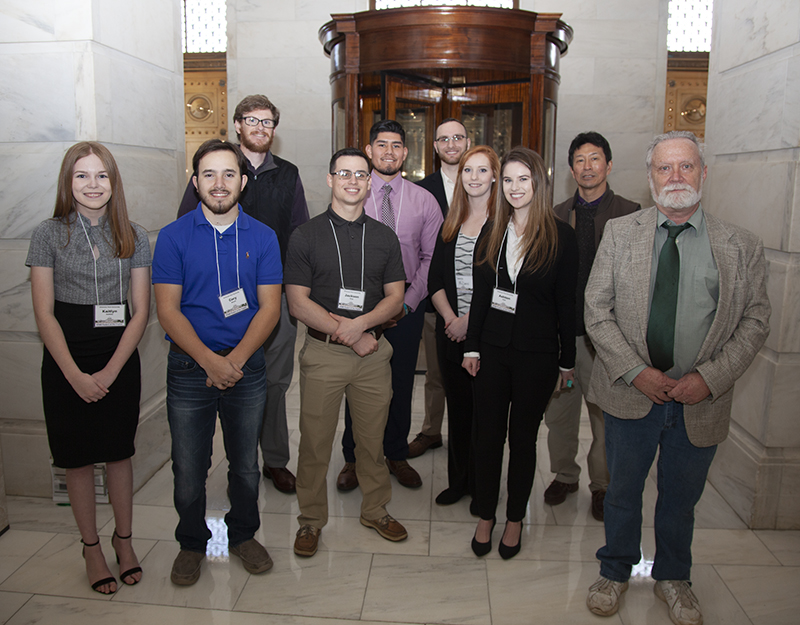
Arkansas Tech University junior Jackson Gray of Fordyce became interested in undergraduate research when he took a genetics course under ATU Professor of Biology Dr. Tsunemi Yamashita.
It put Gray on a path that led him to Little Rock on Wednesday, Feb. 19, as a participant in the 2020 STEM Posters at the Capitol event.
“(Dr. Yamashita) took time out of his day in class period to talk about how we should pursue undergraduate research because this gives us experience as up-and-coming scientists, doctors and chemists to utilize our lessons and experiences,” said Gray, who hopes to attend medical school after completing his Bachelor of Science degree in biology at ATU. “I went up to him after class and asked him what research project he could put me on. I wanted to get involved immediately.”
STEM Posters at the Capitol is an annual gathering of undergraduate students from around Arkansas. Participants share their scientific findings with legislators, state officials and additional attendees. This year, more than 140 undergraduate students representing 17 colleges and universities presented their posters.
Gray is part of a team that is studying the antimicrobial properties of the beta toxin protein found in the venom of the striped back scorpion as a means of combating bacterial resistance in modern medicine.
“This is something that holds near and personal to me because my son has been affected by resistant bacteria,” said Gray. “If I can figure out what is going on with this, even if I have to stay up a couple of extra hours per night to do so, I’m willing to because Dr. Yamashita is counting on me, Arkansas Tech is counting on me and our sponsors are counting on me. Teamwork, learning how to tackle complex situations and how to think critically are some of the big takeaways I’ve had.”
Danielle McDaniel, an ATU senior biomedical major from Dover who plans to attend dental school after graduation, is Gray’s peer collaborator on the project.
“Compiling all the information from multiple semesters is what makes a project like this successful,” said McDaniel. “It’s like an artist who’s been working on a painting behind closed doors and then finally gets to show it in public. It’s awesome to hear people’s questions and suggestions on how we could improve.”
Seven ATU students presented at 2020 STEM Posters at the Capitol.
“It’s a great opportunity because it helps me get out there as a student researcher,” said ATU student Ben Quattlebaum. “It helps me learn about the field that I want to get into and receive feedback from people who may not be aligned with this field. Helping them understand what I am doing can be beneficial.”
Quattlebaum is a senior biochemistry major from Benton. He will graduate from ATU in spring 2020 and begin study at the University of Arkansas for Medical Sciences College of Pharmacy in fall 2020.
“ATU is a very congenial environment,” said Quattlebaum. “(My professors) want the best for me. They want me to grow as a researcher and as someone who is trying to learn more about science. They’ve given me a lot of opportunities and a lot of help getting into professional school.”
Quattlebaum teamed with fellow ATU students Maliha Aniqa, Fischer Huey and Kiran Kaur to engage in a genomics research project.
Dr. Newton Hilliard, ATU associate professor of chemistry, served as faculty mentor for Quattlebaum’s group.
“It’s a chance to demonstrate accountability,” said Hilliard when asked about the value of STEM Posters at the Capitol to the Arkansas scientific community. “We are accepting taxpayer money, and today we are in the home of the taxpayers’ representatives displaying what we are doing with those taxpayer dollars. I could not be prouder of our students in this venue and others. We have students who are moving into a world and a workplace where they are competing one-on-one with graduates from Harvard, Princeton, Yale…and our graduates can hold their own. For a student from a rural background to achieve that is a powerful message and life-changing for these young people.”
ATU senior David Banda grew up in Amity. He plans to attend UAMS or Baptist Health College for an advanced degree in nuclear medicine technology after his graduation from ATU in spring 2020.
Banda’s peer collaborator for the STEM Posters at the Capitol presentation was ATU senior Ashton Hale of Glenwood. A biochemistry major, Hale has a goal of graduating from pharmacy school.
“It’s definitely gratifying because we put in a lot of work and hours,” said Banda. “To present it and receive a little bit of recognition for it is nice. We’re doing this for our professors, so it’s good to be able to show them we’re doing a good job and to hear that from other people. We learned a lot of new methods through this project. At the end of the day, what it really comes down to is having a good work ethic.”
Like Gray and McDaniel, Banda and Hale were mentored by Yamashita.
“They get to talk to people and have to think on their feet to answer questions from a diverse audience,” said Yamashita when asked about the value for students participating in STEM Posters at the Capitol. “They get to learn and develop some maturity. The other thing that’s really neat is that it allows them to personalize their education at Tech. That’s one of the things I really like about it. They get an opportunity to pull the material from their courses and gain a skill set that will really help them later on.”
Dr. Jacob Grosskopf, ATU assistant professor of geology, provided guidance for ATU students Kaitlyn DeAtley of Midway and Cory Strack of Conway as they studied the Upper Atoka rock formation present at the Paris reservoir spillway.
“They are sophomore to junior level, and we started this project at the outset of their sophomore level work,” said Grosskopf. “Their understanding of geology has increased quite a bit. They can see through the weeds now and have a much better picture of how geology works. This project has helped bring them to the next level.”





